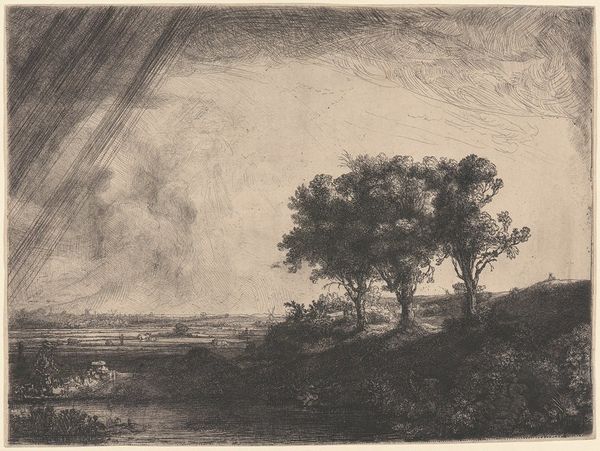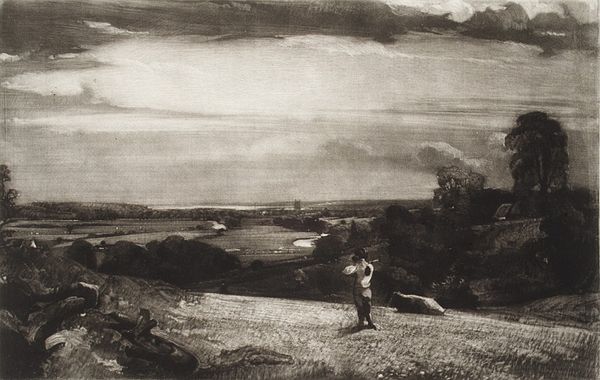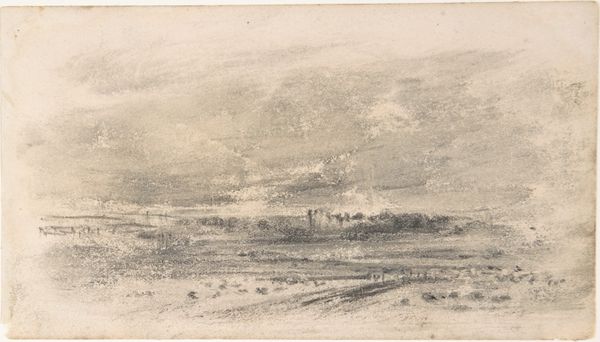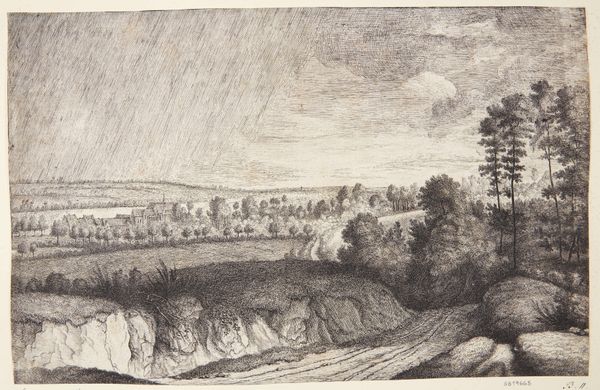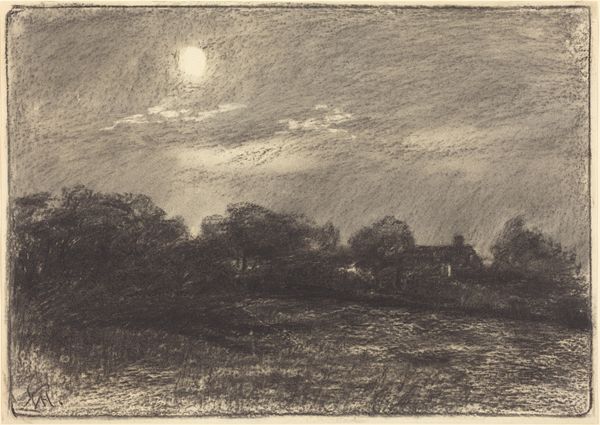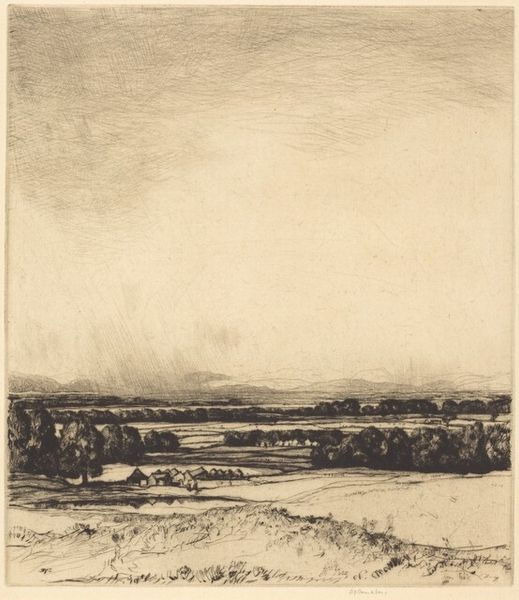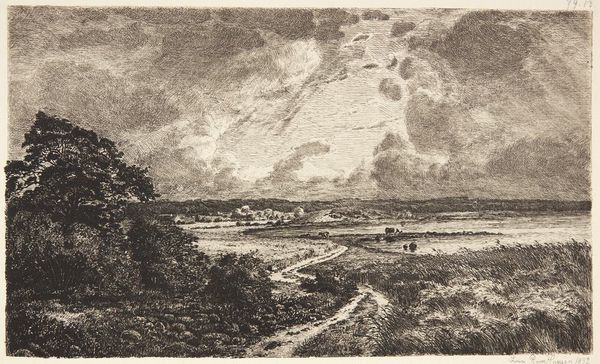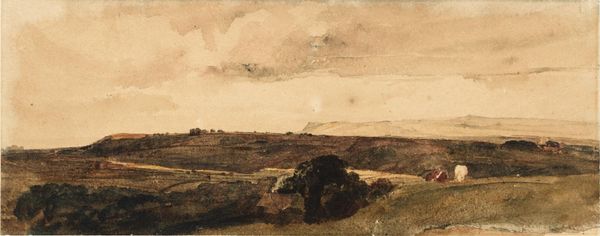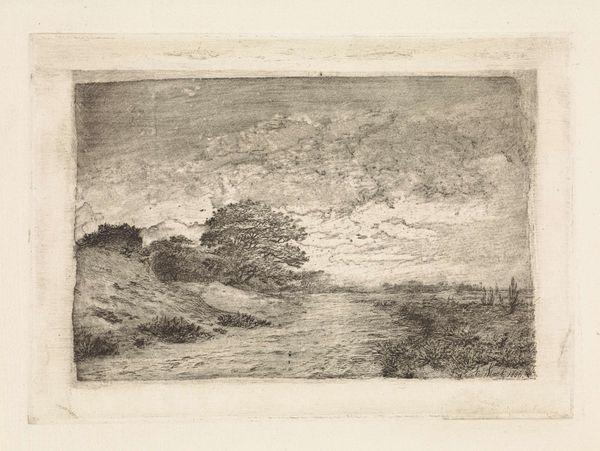
drawing, print, paper, charcoal
#
drawing
# print
#
landscape
#
charcoal drawing
#
paper
#
romanticism
#
charcoal
#
charcoal
Dimensions: 140 × 217 mm (image); 175 × 252 mm (plate); 292 × 432 mm (sheet)
Copyright: Public Domain
Curator: “Summer Morning,” a charcoal drawing rendered into a print by David Lucas in 1831. It just oozes rural tranquility. What’s your immediate sense of it? Editor: Grayness. And not just because it’s a print; there's something subdued, almost melancholy, about the light and the scene itself. A sense of heavy, humid air…almost oppressive, really. Curator: Oppressive? I see a quiet beauty, light filtering through clouds, touching the cows, the land… Doesn't it evoke that particular, gentle start to a summer's day? The birds lifting, the world awakening? Editor: I notice the density of the blacks, the obvious manipulation. Charcoal’s sooty reality, translated through laborious processes, transforms rural life into commodity for urban consumption. Even those "romantic" rays feel… manufactured. Curator: But the Romantic movement was all about feeling, wasn't it? That sense of the sublime within the ordinary? Surely that’s what Lucas, channeling John Constable, his teacher, aimed for, crafting this drawing that evokes a mood, a specific fleeting moment in time? Editor: Crafted is key. Think of the man hours involved to create this piece, from charcoal production to preparing the printing plates. A very material transaction for representing… well, laborers themselves. Is that child in the foreground working? Curator: Perhaps tending the cattle, simple pastoral work... a small moment of the great working day that has started. And this drawing… I find something really beautiful in the layering and gradations. Lucas, from the hands, coaxed a wonderful range of tones, giving a lovely luminous effect to that skyscape. Editor: I see the appeal, definitely. But acknowledging the unseen labour that went into capturing "Summer Morning", really underlines the social and economic framework within which this 'pastoral scene' came to be, where some do the dreaming and others the sweating to bring it into existence, a material cycle. Curator: Yes, a drawing, even of something so simple as dawn over land, doesn’t emerge from a vacuum. The social context certainly shapes the output, it always does… But still, maybe there’s still space left for simply savoring the poetry it creates! Editor: Precisely, "creates"! Recognizing art as something built, layered, worked over gives me something solid, a new appreciation, far from "divine" inspiration... And from my understanding, that can only deepen anyone else's engagement with the work here too.
Comments
No comments
Be the first to comment and join the conversation on the ultimate creative platform.


